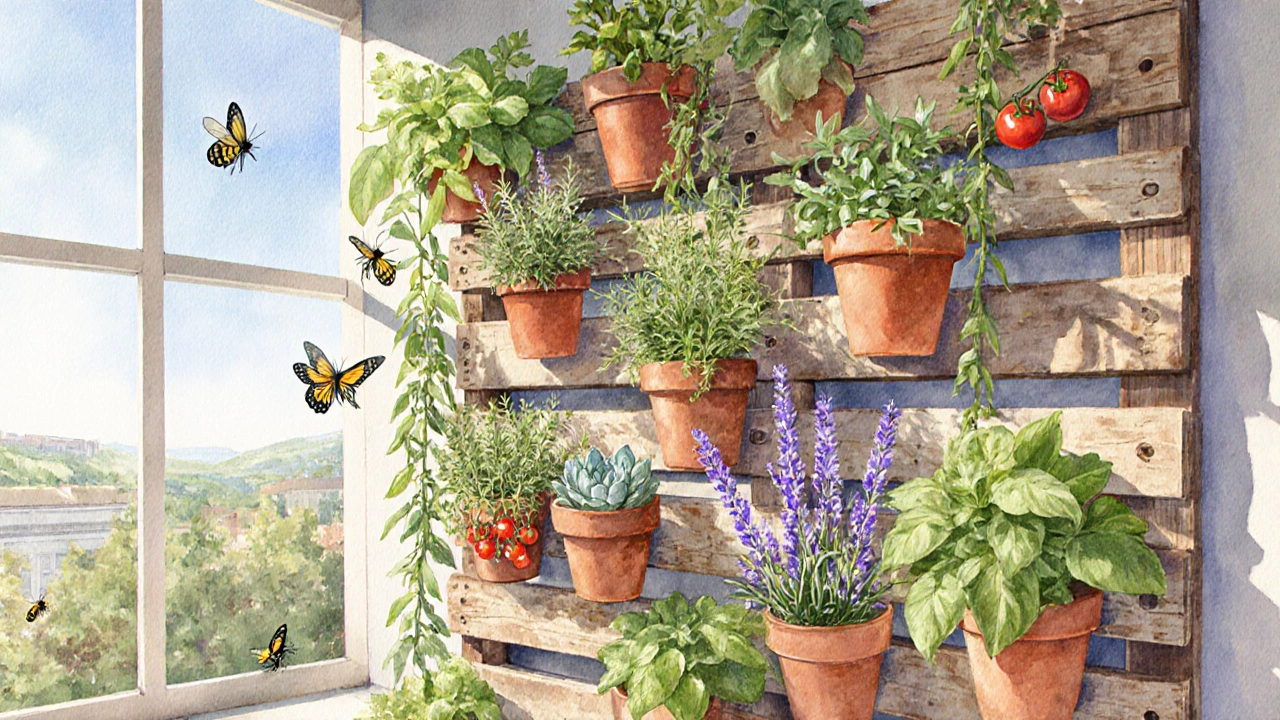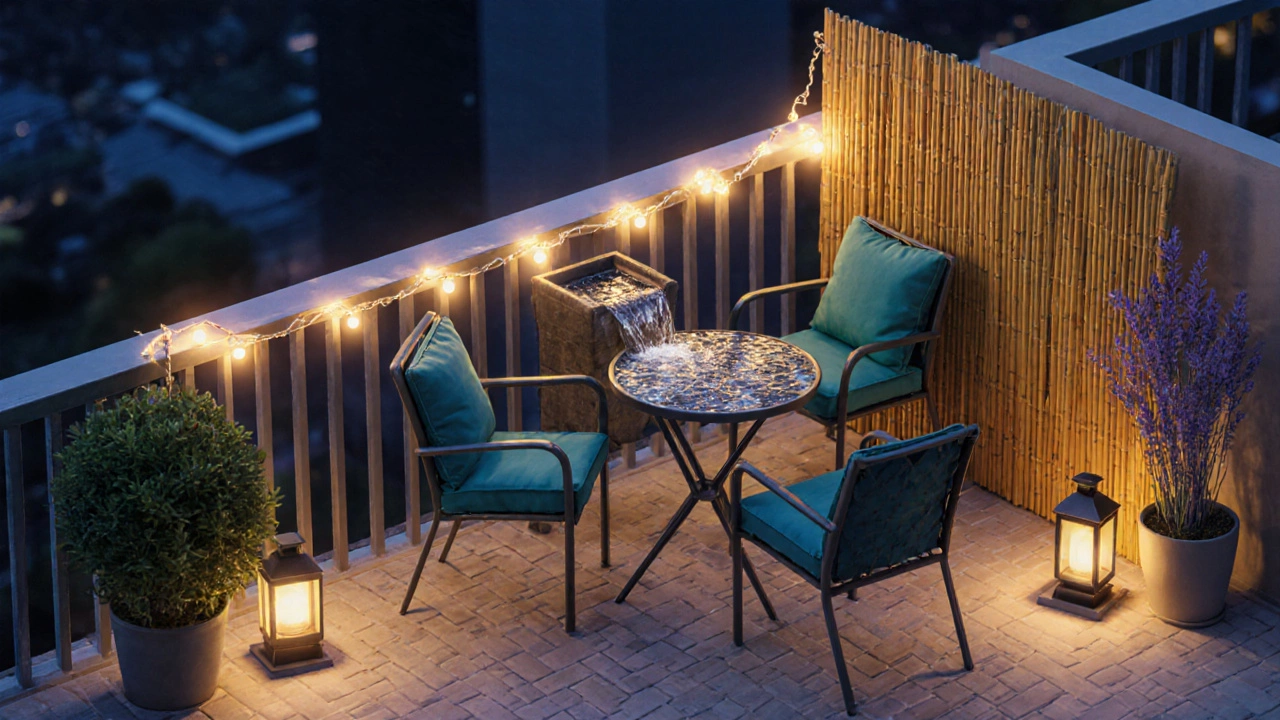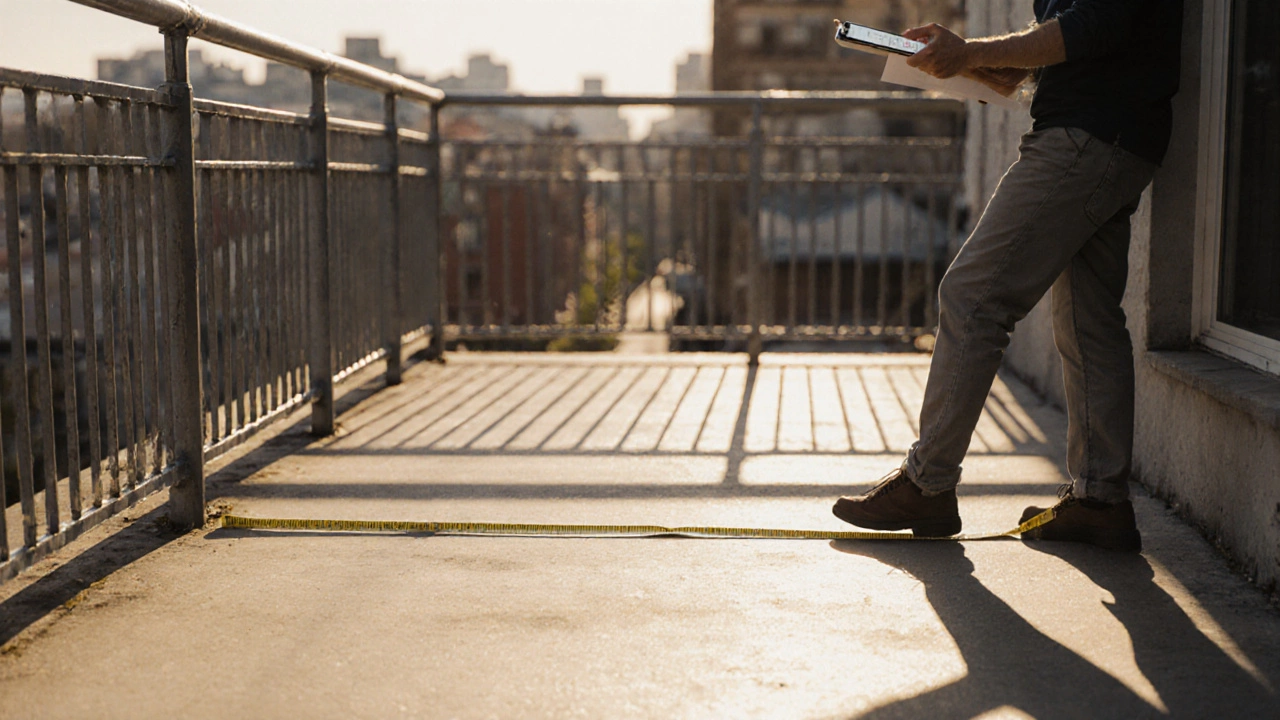Terrace Plant Selection Calculator
Select your terrace conditions below to get personalized plant recommendations
Recommended Plants
Remember: Your terrace's microclimate may vary from this recommendation. Check your specific location daily for best results.
When you start thinking about terrace gardening, the first question is usually "what can I put on my terrace?" It’s not just about adding a few pots - it’s about turning a flat, often overlooked space into a functional, beautiful extension of your home.
Assess Your Space Before You Fill It
Every terrace has its own personality, defined by size, orientation, load‑bearing capacity and exposure to wind or sun. Start by measuring the floor area, noting any railings, and checking the building’s policy on permanent fixtures. Then, spend a sunny afternoon observing how light moves across the surface. Does it stay bright all day, or does it shift from full sun to shade? This simple audit tells you which plants will thrive and which décor elements need extra anchoring.
Core Plant Options for Any Terrace
Container plants are the backbone of terrace gardening. They let you move a plant if the wind gets too strong or if you want to re‑arrange the layout. Choose breathable pots - terracotta, woven fabric or lightweight resin - and use a high‑quality compost mix to keep roots healthy.
Vertical garden systems let you maximize the limited floor area. Simple wooden pallet frames, modular wall panels or hanging pocket systems can hold herbs, trailing flowers or small succulents. A vertical set‑up also creates a natural screen for privacy.
Herb garden is a favorite for city dwellers. Basil, thyme, rosemary and mint grow well in 8‑inch pots and give you fresh flavours right at the dinner table. Herbs love sunlight and well‑drained soil, making them low‑maintenance staples.
Pollinator‑friendly plants such as lavender, salvias and dwarf sunflowers attract bees and butterflies, helping your other vegetables and flowers set fruit and bloom more vibrantly.
Design Elements That Transform a Terrace
Outdoor furniture should be proportionate to the space. Fold‑away chairs, a compact bistro set or a narrow bench with built‑in storage keep the area functional without crowding it. Look for weather‑resistant frames - aluminium or powder‑coated steel - and cushions made from quick‑dry fabrics.
Lighting is essential for evening enjoyment. Solar‑powered LED string lights, wall‑mounted lanterns or low‑profile spotlights highlight plant focal points and make the terrace feel safe after dark.
Water feature doesn’t have to be a huge fountain. A small tabletop cascade or a self‑circulating pond kit adds soothing sound and raises humidity - a plus for tropical foliage.
Decorative tiles can turn a plain concrete slab into a patterned floor. Interlocking peel‑and‑stick tiles are easy to install, slip‑resistant and come in dozens of designs.

Choosing the Right Plants: A Quick Comparison
| Plant | Sun Requirement | Typical Height (cm) | Water Need |
|---|---|---|---|
| Lavender (Lavandula) | Full sun (6+ hrs) | 30‑60 | Low - allow soil to dry between watering |
| Dwarf Cherry Tomato | Full sun | 45‑90 | Medium - consistent moisture |
| Strawberries (Alpine) | Partial sun | 15‑30 | Medium - keep soil moist but not soggy |
| English Ivy (Hedera helix) | Partial shade to full shade | Climbing - up to 150 | Low to medium |
| Basil (Ocimum basilicum) | Full sun | 20‑45 | Medium - regular watering |
Practical Tips for Thriving Terrace Gardens
- Use a good potting mix. Regular garden soil is too heavy for containers and can compact quickly.
- Drainage is non‑negotiable. Every pot needs a drainage hole and a saucer to catch excess water.
- Group plants by water needs. Place drought‑tolerant species together to avoid over‑watering tender ones.
- Feed regularly. Liquid fertilizer every two weeks during the growing season keeps foliage lush.
- Watch the wind. A portable windbreak - a bamboo screen or tall potted grasses - can protect delicate flowers.
Budget‑Friendly Ideas to Dress Up Your Terrace
If you’re watching the wallet, repurpose what you already have. Old wooden pallets become vertical planters with a few drilled holes. Repaint tired metal chairs with chalk paint for an instant refresh. Second‑hand market stalls often sell lightweight ceramic pots for a fraction of the retail price.

Common Mistakes and How to Avoid Them
Overcrowding is the most frequent error. A jam‑packed terrace looks busy but blocks airflow, leading to fungal diseases. Start with a simple layout, then add pieces gradually.
Choosing the wrong soil type is another pitfall. Heavy garden loam retains water and rots roots. Opt for a peat‑free, lightweight compost blended with perlite for aeration.
Ignoring seasonal changes can kill plants fast. In Manchester, late summer can bring sudden frosts. Keep a portable frost blanket handy and move tender herbs indoors when temperatures dip below 5°C.
Next Steps: Turning Ideas into Reality
- Sketch your terrace on graph paper - one square equals 10cm. Mark load‑bearing zones and sunlight patterns.
- Select three plant groups from the comparison table that match your light and water conditions.
- Buy containers, potting mix and a watering can. Choose at least one vertical system if floor space is limited.
- Arrange furniture first, then place plants, leaving enough room for airflow.
- Install lighting and any decorative tiles before the first frost to give materials a chance to settle.
- Water, feed and enjoy - adjust as you learn how your micro‑climate behaves.
Frequently Asked Questions
Can I grow vegetables on a small terrace?
Yes. Choose compact varieties such as dwarf tomatoes, salad greens, carrots (grown in deep pots) and bush beans. Pair them with vertical trellises for beans and peas to free up floor space.
What’s the best soil mix for containers?
A mix of 40% peat‑free compost, 30% perlite or pumice, and 30% coarse sand provides drainage, aeration and enough nutrients for most terrace plants.
How much sunlight does a terrace in Manchester usually get?
Most south‑facing terraces receive 5‑6 hours of direct sun, while east‑ or west‑facing ones get 3‑4 hours. Shaded terraces are best for leafy greens and shade‑loving herbs.
Do I need a drip‑irrigation system for a terrace?
A simple drip line with a timer can save water and keep plants evenly moist, especially in windy conditions. For a handful of pots, a watering spike or self‑watering pot may be enough.
Can I keep pets on the terrace?
Yes, but ensure the railings are secure and choose non‑toxic plants such as rosemary, thyme and basil. Avoid lilies, oleander or any plant known to be poisonous to cats or dogs.

